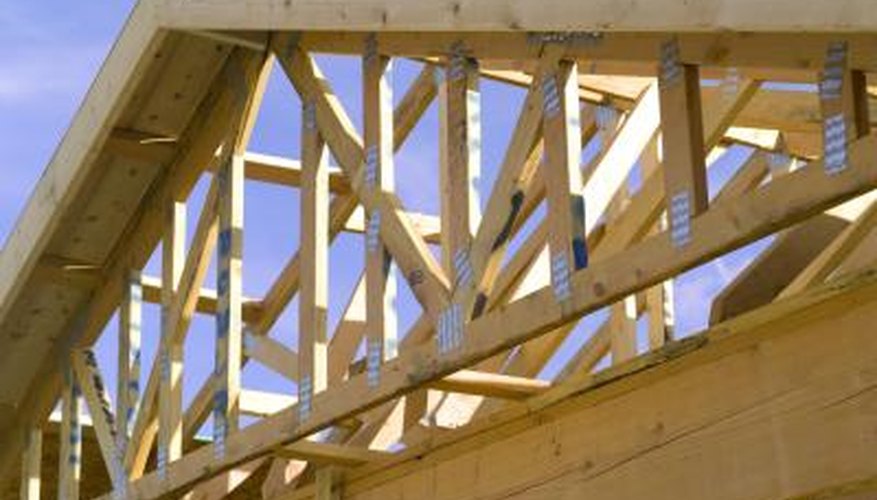Joists and rafters are components used in the construction of buildings. Understanding the difference between them is essential for those working in the construction trades, while basic knowledge is useful for homeowners if repair and maintenance issues arise.
Timber Joists
Joists are the parallel horizontal beams that run across an open space, joining opposite walls in a building to support both the ceiling below and the floor above. Joists are traditionally made from timber. They are 2 inches wide and come in a variety of depths from 8 to 12 inches. The choice depends on the load-bearing requirement, which is strongly influenced by the length of the span that the beam must bridge.
- Joists are the parallel horizontal beams that run across an open space, joining opposite walls in a building to support both the ceiling below and the floor above.
- The choice depends on the load-bearing requirement, which is strongly influenced by the length of the span that the beam must bridge.
Other Joist Materials
In many modern building projects, traditional timber joists are replaced by ones manufactured from alternative materials. Steel "I-profile" beams are used in the construction of steel-framed buildings. These have the advantage of spanning greater distances without bowing. Timber "I-joists" are also available. These are manufactured with laminated or dimensional timber forming the flanges of the "I" and plywood forming the centre, or web. Pre-stressed concrete beams are used in some construction projects. These are combined with innovative flooring methods that can help speed building work.
- In many modern building projects, traditional timber joists are replaced by ones manufactured from alternative materials.
- Steel "I-profile" beams are used in the construction of steel-framed buildings.
Rafters
Rafters are the building components that run diagonally from the wall plate to the apex of a roof structure. Rafters form the foundation for attachment of the roof boards, onto which the final roof covering is fixed. In traditional timber, they are 2 inches wide and 8 to 10 inches deep.
Roof Trusses
In many modern construction projects, prefabricated roof trusses are used. These triangulated structures, with a high degree of strength and stability due to the geometry used, form both the joist and rafter components of a building. These structures are typically manufactured offsite to a detailed plan and delivered complete, which helps to speed construction.
